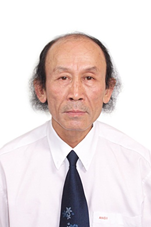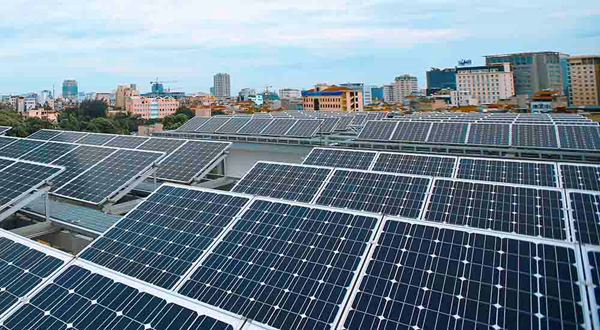

10/10/2016
On March 18th, 2016, the Vietnam’s Prime Minister issued Decision No. 428/QĐ-TTg on approving Adjusting National Power Development Plan from 2011 to 2020, with vision towards 2030 (referred to as Adjustment Power Plan VII), with a view to develop renewable energy (RE) is a breakthrough towards ensuring national energy security and reducing negative impacts on the environment. Environment Magazine had an interview with Dr. Dương Duy Hoạt - Member of Science Council, the Vietnam’s Institute of Energy Science on this issue.
 |
| Dr. Dương Duy Hoạt Member of Science Council, Vietnam’s Institute of Energy Science |
Can you tell us the prior content for the development of RE in the National Adjustment Power Planning VII ?
Dr. Dương Duy Hoạt: The Adjustment Power Plan VII is the national power development plan from 2011 to 2020, with a vision to 2030 which was approved by the Prime Minister at Decision No. 1208/QD-TTg, dated July 21th, 2011. After five years of implementation, apart from its positive contribution towards ensuring power supply in Việt Nam, the Plan has shown some shortcomings. It is not adapted to the reality of Việt Nam and the world. On the other hand, the Plan does not deal with the problem of global warming due to greenhouse gas emissions. As a result, the Plan had to be amended to be adapted to the reality. After collecting the opinion of Ministries, branches, localities and scientists, the Adjustment Power Plan VII was approved by the Prime Minister. With the goal is to supply electricity for socio-economic development and achieve GDP growth of about 7% per year in the 2016 - 2030 period, the Adjustment Power Plan VII will be preferred to develop RE for electricity production and gradually increase the proportion of electricity produced by RE sources (hydro, wind, solar and biomass) in the structure of the power development plan. RE production will reach about 7% per year by 2020 and more than 10% per year by 2030. Particularly, priority will be given to the development of hydropower, and projects such as flood control, water supply and electricity production. There is also a plan to put into operation a pumped storage hydropower plant in line the development of the national power grid to improve operational efficiency. The total capacity of hydropower plants (including small and medium hydropower plants and pumped storage hydropower plants) will be increased from the current 17,000MW to about 21,600MW by 2020, and 24,600MW by 2025 (1,200MW of pumped storage hydropower plants) and 27,800MW by 2030 (2,400MW of pumped storage hydropower plants). Electricity production from hydroelectric sources will account for about 29.5% in 2020, 20.5% in 2025 and 15.5% in 2030.
The Plan also aims to raise the total capacity of wind power production from the existing 140MW to 800MW by 2020 (electricity production accounting for 0.8%), or 2,000MW (1%) by 2025 and 6,000MW (2.1%) by 2030.
On the other hand, biomass energy is being used in sugar, food and foodstuff processing plants, and along with coal at coal-fired power plants to generate electricity from solid waste. The proportion of electricity production from biomass will reach about one percent by 2020, 1.2 percent by 2025 and 2.1 percent by 2030.
In addition, solar energy will be promoted, such as by installing solar energy equipment on the ground and scattered equipment the roofs of buildings. The Plan also aims to raise the total capacity of solar power production from a modest ratio to about 850MW (0.5%) in 2020, 4,000MW (1.6%) in 2025 and 12,000 MW (3.3%) in 2030.
What are the challenges and opportunities that Việt Nam faces while implementing policies to increase the ratio of electricity from RE sources?
Dr. Dương Duy Hoạt: Việt Nam has great potential in developing RE sources, such as wind and solar power, and biomass. Việt Nam also has international commitments of developing RE sources to reduce greenhouse gas emissions and is capable of acquiring experience and applying advanced RE technology from many countries. In addition, Việt Nam has also received financial support from the international community for the development of RE.
However, Việt Nam will also have to cope with challenges such as developing RE that fails to meet its potential and use available advantages. RE is a clean energy resource, but still can have negative impact on the environment. As a result, businesses need to invest in research to reduce negative factors, such as the impact of hydropower plants on the environment.
In addition, Việt Nam does not have appropriate policies to attract local and foreign investors to the development of RE. Scientific manpower does not yet have formal training and they do not have a good knowledge of RE.
 |
| Việt Nam needs to have a mechanism to encourage enterprises to use and develop solar energy |
What are your suggestions for encouraging businesses to develop RE sources?
Dr. Dương Huy Hoạt: To develop Việt Nam’s RE sustainably and efficiently, there should be a consensus. At the same time, Ministries, branches and localities should be instructed by the Government to implement their plans and schemes for the development of RE. They need to respond to the demand and supply of RE as well as build schemes and develop RE sources.
Simultaneously, Việt Nam needs to build a law on RE. Currently, it has the Law on Electricity, Law on Saving and Using Efficient Energy. Learning from the success of other countries and preparing a law on RE will become a key and prerequisite solution. The Ministry of Science and Technology should be asked to work on this law.
In addition, the formulation of standards and national standards on RE are a must and the building of a key laboratory on RE is also a need. Moreover, a fund for sustainable energy development can be established that will use money from the state budget, environment tax on fossil fuels, aid, and financial contribution of organisations and individuals, both local and international, as well as legal financial sources. This fund can be used for the development of RE conducting pilot projects and gradually expanding them, such as the construction of green houses, green buildings and green urban and rural areas.
On the other hand, businesses can be asked to participate in RE development. The State needs to offer preferential finance policies to manufacturers involved in the assembly and repair of things such as water boilers, small hydropower plants, wind turbines and biogas. Import and production tariff incentives should be given for the purchase of advanced technology and copyright protection for inventions or technical innovations in the field of valuable RE. The list of investment projects has to be made publicly and every economic sector should be encouraged to invest in RE.
Finally, dissemination of knowledge and propaganda about the importance and effectiveness of economic, social and environmental protection and development and utilisation of RE in the process of sustainable development are important to implement practical action, contributing to the development and use of this energy resource.
Thank you!
Châu Loan
(Implemented)